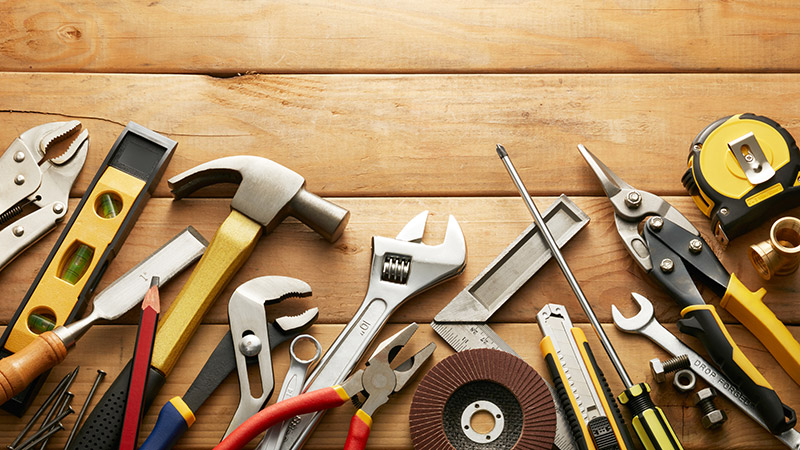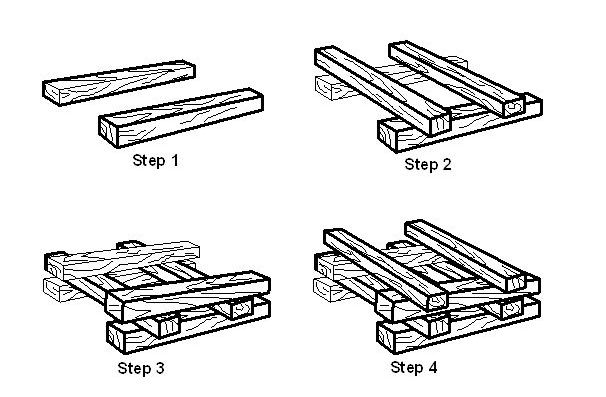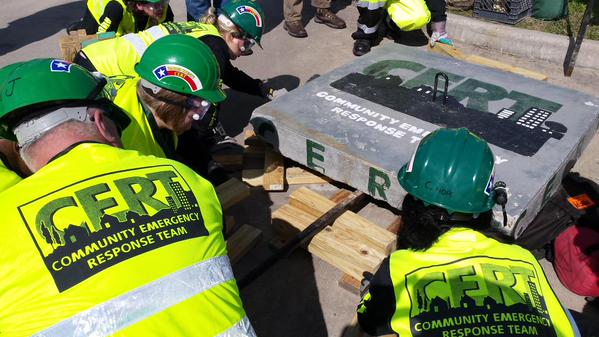
Following a disaster that compromises the structure of houses, offices, and other buildings, emergency tools can provide the means to perform a rescue of trapped people, gain entry to much needed supplies, or help to secure a home that has been compromised. The most common disaster in Southern California that will result in widespread structural damage is an earthquake. However, windstorms, falling trees, flooding, and even smaller tornadoes can affect Southern California. It is imperative to know when it is safe to work in a disaster affected area; evaluating the situation, hazards present, and tools and resources will determine the actions.
Safety of the Scene
Working in a disaster affected area can be extremely dangerous. Wait until the immediate hazard has passed before attempting to make entry into a building after a disaster. The transition between a building and outdoors is often the most hazardous location, as even small falling objects can be fatal. In the case of an earthquake, avoid any building with a collapsed wall, roof that has fallen, or has shifted off its foundation. Additional warning signs include large cracks (greater than a 1/4 inch wide) that go diagonal to each other from corners of windows or other weak points in the structure in a pattern known as “X cracking.” Buildings that exhibit any of these signs are in danger of imminent collapse. Other problem areas include houses built on slopes. If damage is present within the neighborhood, avoid entering houses on slopes, as they can experience rapid and unexpected ground failure.
Personal Protective Equipment
Having the correct personal protective equipment is a prerequisite to working in the post-disaster environment and using any tools. The following are considered the essentials:
- Construction hard hat
- Protective eyewear
- Dust mask (use surgical mask or N-95 mask)
- Leather gloves
- Closed toed shoes with heavy soles
- Kneepads (optional, but critical if crawling through debris)
Taking it from the top, a construction helmet is inexpensive protection against falling objects and debris. Be sure to inspect the condition and fit of the internal suspension, which holds the hard plastic shell above the head and absorbs the shock when hit. Eye protection should provide wrap around protection and be made of a shatter-free material. Dust masks must be tight fitting and provide a good seal against dust and debris that is abundantly present; avoid cheap paper filter masks that provide a poor fit. Leather gloves provide basic protection against glass, metal, and other sharp objects. Finally, close-toed shoes with heavy soles will provide protection against nails and glass in the disaster zone.
Essential Tools
Lighting
Having emergency lighting in a disaster is crucial for conducting rescue work, but also is beneficial for day-to-day activities that need to be completed after dark, particularly when power has been lost. LED lights have revolutionized emergency lighting, because they combine brightness and long run times. Headlamps can be particularly useful, as they free both your hands. LED lanterns can provide a diffuse area light for larger tasks. Chose a light that is water resistant and durable. Higher quality lights can be found at provide better efficiency and longer run times than less expensive flashlights and headlamps that are often found for under $5. While high performance LED lights using rechargeable lithium ion 18650 batteries provide exceptional performance, recharging these batteries may be difficult without power. Be sure to have some lights that can be powered by commonly available batteries such as AAA, AA, C, or D cell batteries.
Multi-tool
The modern equivalent of the venerable Swiss Army knife, today’s multi-tools typically include pliers, knife, small saw, Philips and flat head screwdrivers, and sometimes even a can opener. These range in price and features. This is one case where a higher price often means considerably better quality. Name brands like Leatherman, Gerber, and SOG make tools that will last a lifetime.
Crowbar
These come in a variety of shapes, sizes, and names. Whether you go with a crowbar, demolition bar, wrecking bar, pry bar, or utility bar, they are all designed to gain leverage over an object in order to separate them. Most will also have cutouts to help pull out nails. Larger bars provide more leverage, while small bars can get into tighter spaces. Useful for removing obstructions or forcing entry in windows or doors. Special bars called a digging bar, San Marino bar, or pinch point crowbar are strait and come in lengths between 60-72 inches. These long bars provide the ability to lift 1000+ pounds when used against another object as a fulcrum point.
Shovel
A shovel is an essential tool for cleaning up after a disaster, but sometimes can be used to mitigate further damage, such as filling sandbags or digging a trench to divert water. A shovel can also be used to dig a hole or trench to make an emergency latrine. Shovels come in different sizes and shapes; if you can only have one, chose a full-size round point digging shovel, which is the most versatile.
Handsaw
An emergency toolkit should have two different handsaws. One designed to cut through wood (which can be used on wood framing or a tree branch), and a hacksaw that is capable of cutting through metal.
Hammer and nails (Or battery drill/driver and box of screws)
A full sized framing hammer and box of nails will allow you to make emergency repairs, secure loose objects, or build a temporary shelter. A battery powered drill/driver and screws can substitute in some situations. Combined with boards or plywood sheeting, these tools can secure a building with broken windows or doors.
Power tools
Power tools can be very useful after a disaster, but should be used with extreme care. Footing is often slippery, tool operators may be tired, distracted, or emotionally overwhelmed, and the environment compromised, such as the presence of live electrical wires or nails in wood. As a result, tools such as power saws and chain saws are frequent causes of serious injury or death after a disaster.
Light Search and Rescue
Rescuing people trapped under debris can be accomplished with basic tools and supplies, using a technique called “cribbing and leveraging.”
Cribbing and leveraging is a method of lifting heavy objects using a long bar to exert leverage on a heavy object, and securing the object using stacks of wooden blocks (cribbing). It is important to lift the object slowly, and progressively secure the vertical progress with cribbing under all corners to support the weight of the object evenly. Training in cribbing and leveraging is a core part of the Community Emergency Response Team (CERT) training, offered by local fire departments and public safety agencies.
Figure 1. Cribbing
Photo 1. CERT Team Leveraging Object
Rescue should only be undertaken in buildings that are safe to enter and do not present a risk of collapse. A partial or total collapse of a wall or roof, tilting of the building, separation from foundation, or obvious structural instability are indications of heavy damage. Additionally, unreinforced masonry construction or buildings on hillsides with moderate damage can also experience rapid structural failure or collapse. These types of buildings or a building with heavy damage should not be entered. Notify emergency services of the need for heavy rescue.
Resources
Loma Linda University Health does not endorse any specific website or vendor. However, the following websites are provided for additional information and as examples of best practices and local/online vendors for emergency tools and rescue.









